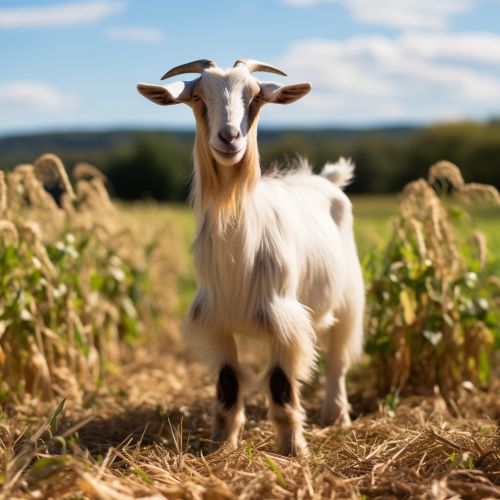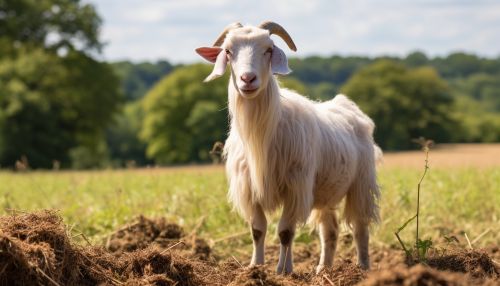Goat
Introduction
The goat (Capra) is a domesticated species of animal that belongs to the subfamily Caprinae, which also includes the sheep. Goats are one of the oldest domesticated species, with archaeological evidence showing their use in agricultural societies as far back as 10,000 years ago. They are raised for a variety of products, including milk, meat, and wool, and are also used in some cultures for religious ceremonies.
Taxonomy and Evolution
Goats belong to the family Bovidae, which also includes antelopes, gazelles, and cattle, and are members of the genus Capra. The domestic goat, Capra aegagrus hircus, is a subspecies of the wild goat, Capra aegagrus. The wild goat is native to western Asia and eastern Europe, and it is thought that the domestication of the goat occurred in these regions around 10,000 years ago. The process of domestication involved selective breeding for traits that were beneficial to humans, such as docility, size, and milk production.
Anatomy and Physiology
Goats are medium-sized animals, typically weighing between 45 and 140 kilograms (100 to 300 pounds), with males being larger than females. They have a lifespan of 10 to 15 years, although some have been known to live up to 20 years. Goats have a distinctive beard, known as a "goatee", and males also have large, curved horns. The body of the goat is covered in a thick coat of hair, which can be a variety of colors, including white, black, brown, and gray.
Goats have a unique digestive system that allows them to consume a wide variety of plant materials. They are ruminants, meaning they have a four-chambered stomach that uses bacterial fermentation to break down plant material into nutrients. This allows goats to consume plants that are indigestible to other animals, and they are often used in land management to control the growth of weeds and other unwanted vegetation.
Behavior and Reproduction
Goats are social animals that live in groups, known as herds. They have a complex social structure, with a dominant male, known as a "buck", leading the herd. Goats communicate with each other through a variety of vocalizations, body postures, and chemical signals.
Reproduction in goats is seasonal, with females, known as "does", typically giving birth to one or two offspring, known as "kids", in the spring. The gestation period for goats is approximately 150 days. Kids are weaned at around three months of age, and reach sexual maturity at around six months.
Uses
Goats have been used by humans for thousands of years for a variety of purposes. They are primarily raised for their milk, meat, and wool, but they are also used for their skin, which can be made into leather, and their dung, which can be used as fertilizer.
Goat milk is highly nutritious, containing more fat and protein than cow's milk. It is also easier to digest, making it a good alternative for people who are lactose intolerant. Goat meat, known as chevon, is a lean meat that is lower in fat and cholesterol than beef or pork. Goat wool, known as mohair or cashmere, is a luxury fiber that is used in the production of high-quality textiles.
In addition to their agricultural uses, goats are also used in some cultures for religious ceremonies. In Hinduism, for example, goats are often sacrificed during the festival of Dashain as a symbol of the victory of good over evil.
Health and Disease
Like all animals, goats are susceptible to a variety of diseases. Some of the most common diseases in goats include caprine arthritis encephalitis (CAE), caseous lymphadenitis (CL), and foot and mouth disease. These diseases can be prevented or managed through a combination of good husbandry practices, vaccination, and veterinary care.
Conservation
While domestic goats are not considered to be at risk of extinction, some wild goat species, such as the Markhor (Capra falconeri) and the Pyrenean ibex (Capra pyrenaica), are listed as endangered by the International Union for Conservation of Nature (IUCN). Threats to wild goats include habitat loss, hunting, and disease transmission from domestic goats.
See Also


